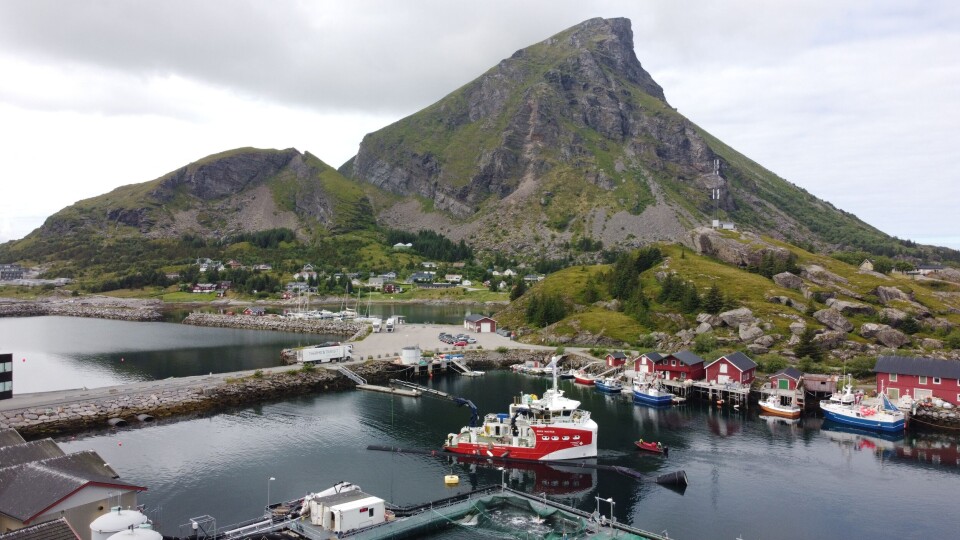
Farmer pumps up the volume of holding cages
A Norwegian salmon farmer has increased the oxygen content and biomass capacity of holding cages outside its processing plant by using a newly developed pump technology.
Nova Sea has six holding cages outside its facility in Lovund, northern Norway, that are sited on the harbour side of a stone causeway that limits the inflow of oxygen-rich seawater to its fish.
The company has solved the problem by installing a pump on the seaward-facing side of the causeway and pumping water through pipes installed in the causeway to the lee side, increasing oxygen levels by 20%.

Welfare and quality
“A 20% increase in oxygen has a positive impact on fish welfare and the quality of the fish we produce,” said Terje Sølna, manager at the Nova Sea plant.
“It also means that we can utilise the current waiting cage capacity better, which in turn leads to improved wellboat logistics and more stable harvesting capacity.”
Nova Sea is using a high capacity pump called the PG-Subflow, developed by PG Flow Solutions.
The pump transfers 20,000m³ of sea water per hour into the cage area.
“We measure the water quality continuously and have measured a 20% oxygen increase in the waiting cages after just 30 minutes of pumping with PG-Subflow. That is impressive,” said Sølna, but also in line with the expectations to the solution.

Modest power usage
PG-Subflow is a high capacity propeller pump with two counter-rotating propellers. Each propeller is driven by a separate electric motor, and each propeller’s speed can be optimised for the task using requency converters. All equipment is electric and suitable for submerged operations in seawater.
“These are high capacity pumps capable of pumping 20,000m³ of seawater per hour despite the relatively modest 21.5 kilowatt effect per pump, which contributes towards keeping operational costs as low as possible,” said Øyvind Berg, vice president sales and marketing at PG Flow Solutions.
“The pump system has been running continuously since mid-July, with very good results. The six holding cages receive a steady and oxygen-rich flow of fresh seawater, but without deforming the cage nets so that they apply pressure on the fish. We are very pleased with the collaboration with Nova Sea and are already experiencing increased interest in PG-Subflow from other fish farming players.”
Nova Sea’s Lovund plant has a daily capacity of 320 tonnes of live salmon and 30 tonnes of fillet. The facility employs approximately 125 people.






















































